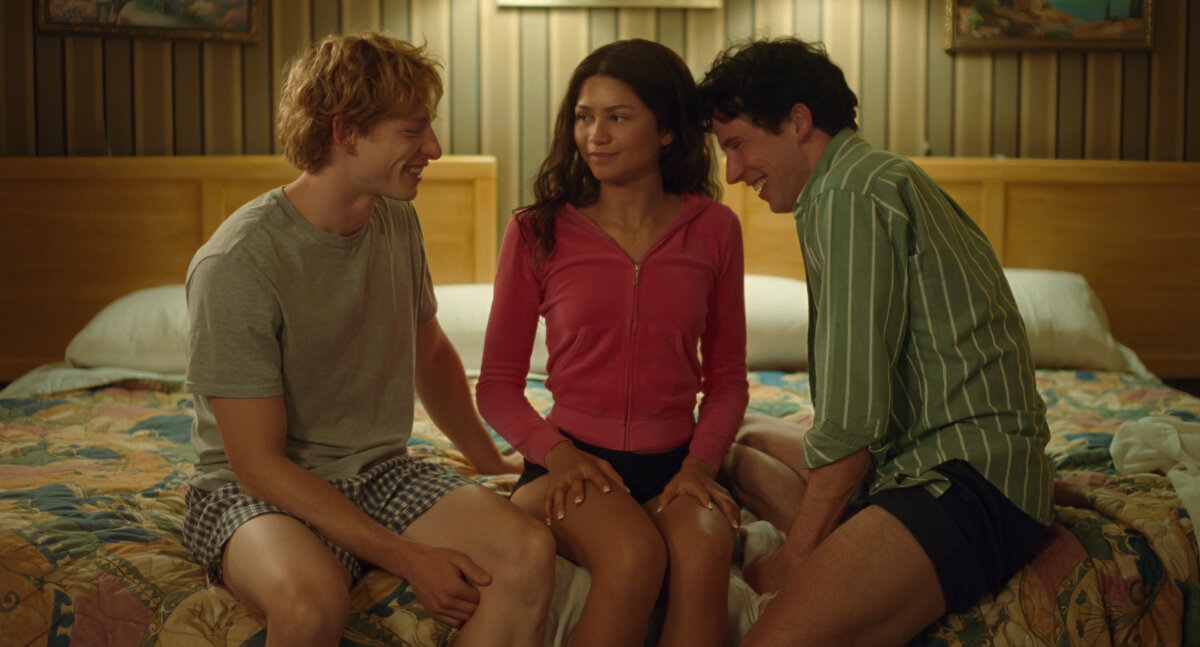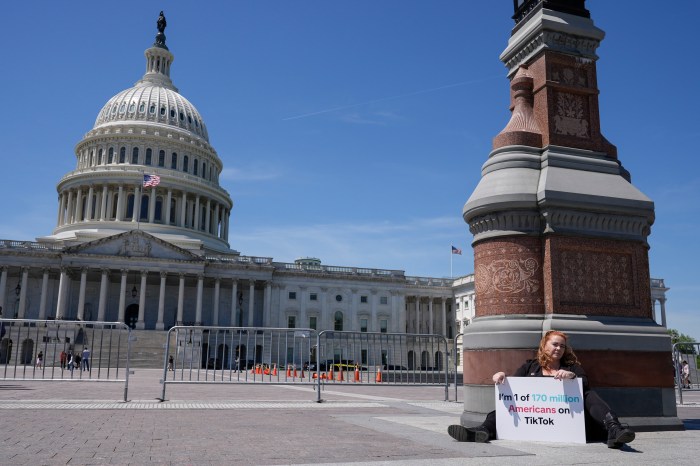“Mad Men’s” final season kicks off Sunday night and fans across the nation are dying to find out how Don Draper’s story ends.
Since it hit the small screen in the summer of 2007, the show brought a new sense of drama and nostalgia that’s captivated audiences around the world.
Experts say creator Matthew Weiner’s writing team, the detailed production design and the acting from Jon Hamm, Christina Hendricks and Elisabeth Moss have influenced both Hollywood and real life in so many ways.
“They created this hyper-real version of the ’60s and everyone has been enamored by it,” said Barbara Miller, a curator at the Museum of the Moving Image, which currently hosts an exhibit featuring the show’s costumes, sets and props.
Even if you didn’t watch an episode of the show, you’ve seen its impact today, from the fashions to glamorization of the ad industry to recapturing the city’s food scene to, on a more serious note, opening up discussions of equality.
“I don’t think you’ll find a show that was this encompassing in a while,” Miller said. — Ivan Pereira
THE AD INDUSTRY
Sterling Cooper & Partners’s success and “wow” factor on the small screen has boosted the appeal of the advertising industry, according to experts.
Timothy de Waal Malefyt, a clinical associate professor of marketing at Fordham University, said he has seen an increase in students who want to be the next Don Draper or Peggy Olson.
“It’s really great they want to get into it because of how the show glamorizes the life,” he said.
Malefyt, who worked in advertising for 15 years before teaching, said the show does take liberties when it comes to working at a top ad agency. There are more hours in a planning room than at the bar, for example, but the stories do deal with the real-life struggles that professionals face every day.
Adapting to new technology and race and gender issues in the market place are as valid today as they were back in the ’60s.
“We are seeing it through a nostalgic point of view but the challenges are still there,” Malefyt said.
The professor added that the nostalgia helped to bring the advertising world back to a more professional setting. Offices, which he noted aren’t on Madison Avenue,
have been going back to suits and other less casual attire over the last few years.
“The Don Draper look has brought back that sense of, ‘let’s dress up and look more important,’” he said. — Ivan Pereira
THE FASHION
The 1960s are back in style, and it’s all thanks to Janie Bryant.
As the costume designer for “Mad Men,” Bryant is behind the show’s sleek, dapper, modern styles. But off screen, men, simply put, want to look like Don Draper, too.
Instead of choosing jeans and a T-shirt, guys are reaching for a skinny tie and a blazer or a sharp suit. Menswear as a fashion norm came back into focus too, in part because of the show, with “Mad Men’s” influence seen in bespoke stores, men’s clothing curators like Trunk Club and in the three collections Banana Republic did for men and women in partnership with the show.
“People always say, I want to get that ‘Mad Men’ look,” Bryant says. “I want to look like Don Draper, I want to look like a Betty, I want to look like a Joan.”
Whether it’s Don’s sharp suits, Joan’s sexy wiggle dresses or Betty’s classic, feminine petticoats, both men and women have adopted the iconic ’60s style and made it their own in today’s fashion culture. “Mad Men” made people want to dress up again. — Will Mendelson
THE FOOD
“Mad Men” may not have literally been filmed in New York during the 1960s, but you could be fooled into thinking otherwise.
From the evolving fashions of the time to the everyday products, each episode is a time capsule of sorts. But this wouldn’t have been a New York show without the proper setting, and the very first episode sets the scene: It’s 1960 New York City, and Don Draper (Jon Hamm) is sitting in a swank bar surrounded by men in suits, drinking martinis and smoking cigarettes.
From there, bars and restaurants have played a major role in the series — they have been the scenes of dates, rendezvous with mistresses and, given the industry, many a business meeting, such as drinks at the hotels The Pierre and Algonguin.
Manhattan was the center of the universe — only Brooklyn-born Peggy Olson (Elisabeth Moss) seems aware of an outer borough — and many of the restaurants recreated on the show are still around today. In Season 1, the Sterling Cooper crew drank beers and did the twist up at P.J. Clarke’s, while in one of the most infamous scenes Don and Roger Sterling (John Slattery) threw back martinis and oysters over lunch at Grand Central Oyster Bar, on the lower level of Grand Central Terminal.
“It was popular for power lunches … the three-martini lunch,” said Sandy Ingber, executive chef at the Grand Central Oyster Bar since 1990. “I think that ‘Mad Men’ depicts what the power lunch was all about.”
New York institutions such as Keens Steakhouse, Benihana, Barbetta and Sardi’s have also popped up throughout the series so far.
This being New York, a city of change if there ever was one, not all of the restaurants visited by the show’s characters are still around today. Gone are the Gaslight Cafe in Greenwich Village, then a hub for the beatnik scene; Hugh Hefner’s Playboy Club on East 59th Street; French restaurant Lutece; high-society favorite El Morocco; the original Palm, on Third Avenue; the famous East Side club The Stork Club; the once-popular Jimmy’s La Grange; the Oak Room at the Plaza Hotel; Bernard “Toots” Shor’s West 51st Street restaurant Toots Shor’s; and the Hemisphere Club, a members-only club that opened to the public at night, located on the 48th floor of the Time-Life Building, where the fictional agency’s office has been housed since season 4.
And, for all the show’s meticulous research, sometimes it got things wrong. In season 6, Joan made reservations at Le Cirque — which wouldn’t open for another six years. — Meredith Deliso
THE WOMEN
The show may be called “Mad Men,” but Matthew Weiner’s masterwork wouldn’t be half as interesting if it weren’t for its strong female characters.
And though Don Draper (Jon Hamm) is the face of the show, it’s been argued that the story really belongs to Elisabeth Moss’s Peggy Olson, who goes from being Don’s meek secretary to a commanding copy chief in a span of a few years — on par with the man she once answered phones for.
In “Mad Men,” most women can be found working as secretaries or phone operators in the 1960s ad world; during business meetings, Peggy is often the only woman in the room.
That depiction rings true to one woman who worked in an ad agency at that time.
“All the executives were men, all the secretaries were women and everybody was white,” says Barbara Winslow, a women studies professor at Brooklyn College who, in 1964, worked under the fashion coordinator at the now-defunct Daniel & Charles advertising agency on Madison Avenue as part of a college co-op.
There were, of course, exceptions, most notably Mary Wells Lawrence. The founding president of Wells Rich Greene, Lawrence was one of the most famous advertising executives during the 1960s and is widely regarded as the real-life Peggy. And in her 2012 memoir, “Mad Women: The Other Side of Life on Madison Avenue in the ’60s and Beyond,” Jane Maas, a former Ogilvy & Mather creative director who started as a copywriter at the agency in 1964, noted that ad agencies during “Mad Men’s” time had more female copywriters than the show depicts, though sexual harassment was common.
Indeed, Winslow says she was “shocked” by the “repulsive passes” ad executives would make at her and her female boss.
“The male chauvinism was so unbelievable,” says Winslow, who finds “Mad Men” difficult to watch because of that. “There was no language to describe male chauvinism at the time … This was before there was \[the term\] sexual harassment.”
These challenges have been a major force on “Mad Men.” In one plotline, Joan Holloway (Christina Hendricks) works her way up to partner at Sterling Cooper Draper Pryce — but only after the partners encourage her to sleep with a client.
The workplace today isn’t what it was during “Mad Men’s” era, of course, but Winslow notes that there is still progress to be made. While professional fields such as medicine, law and academia are more diverse than ever before, industries such as tech and finance are “overwhelmingly male.” According to a study by Silicon Valley Bank in July, only 38% of tech company employees are female.
“It’s complicated progress,” Winslow says. “The real wealth and power is in tech and finance.” — Meredith Deliso
THE NOSTALGIA
One of “Mad Men’s” greatest impacts on pop culture was bringing the 1960s back into the forefront with a different limelight than other shows and movies.
Barbara Miller, a curator at the Museum of the Moving Image, said “Mad Men” presented a new opportunity to explore the decade.
“When you hear the ’60s you think Woodstock and flower power, but it was important for Matthew Weiner is the world of ’60s seen through the adults,” Miller said.
Miller said the show’s attention to detail about the events that transpired in the day helped to set it apart and make the audience truly immersed in the era. In a way, the show helped to educate viewers about the changes going on that decade without preaching, according to Miller.
“It’s healthy to round out our conception of the ’60s with things that happened before 1968,” Miller said. — Ivan Pereira?

















